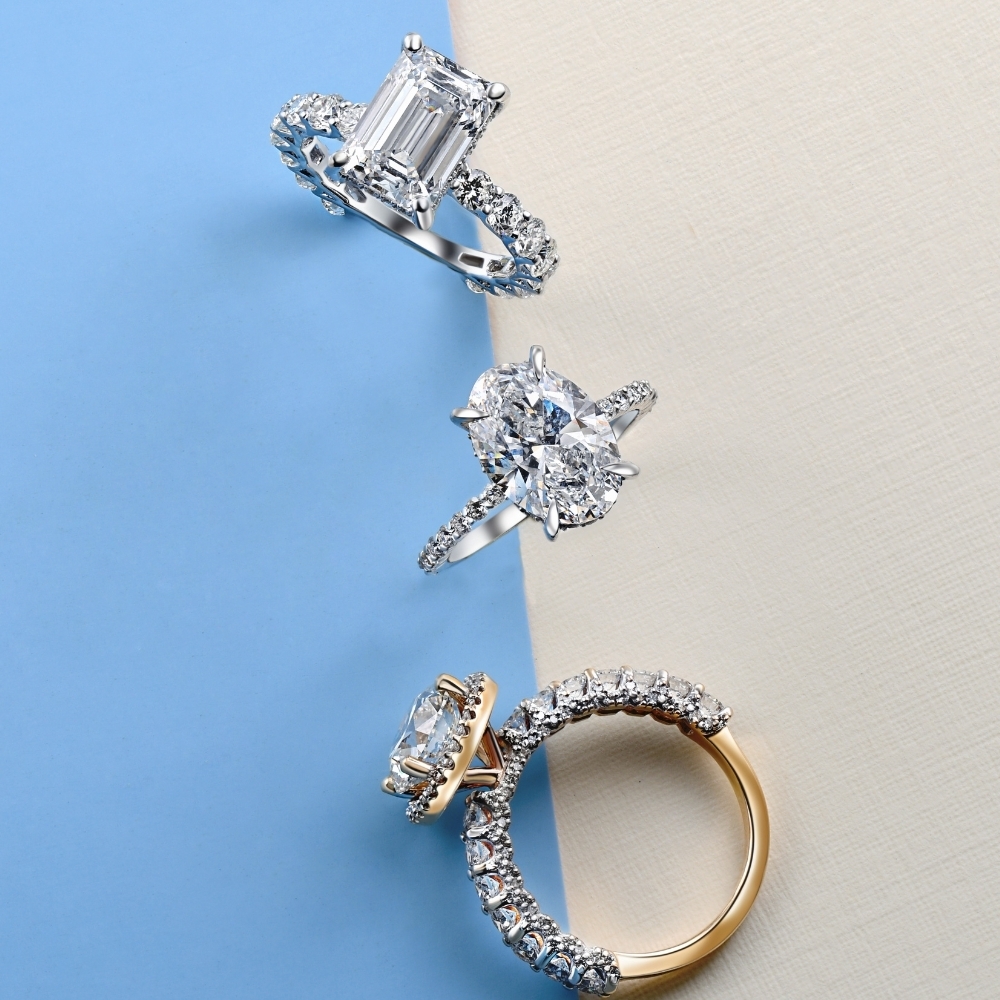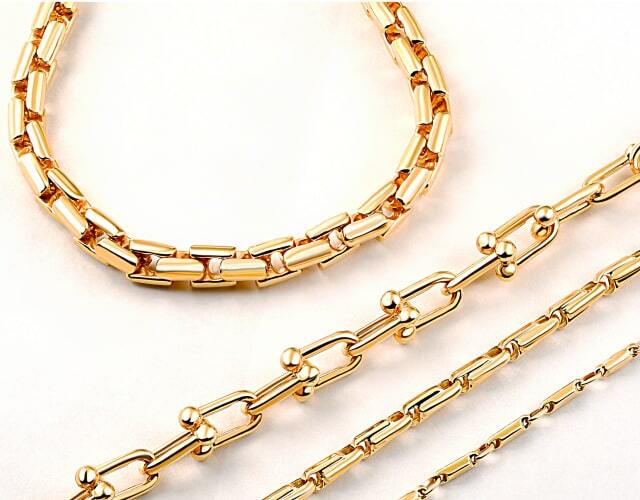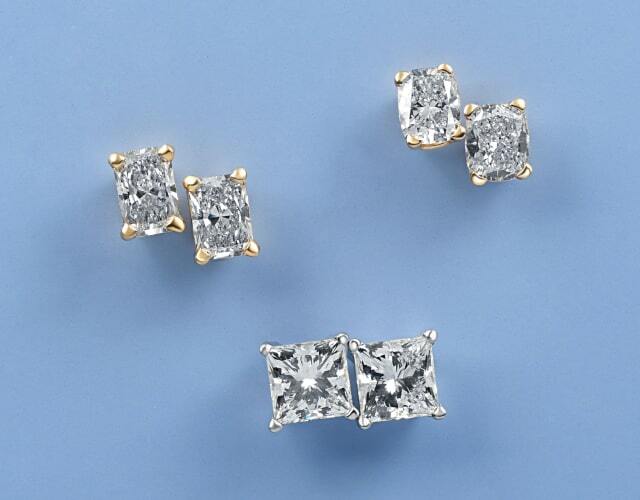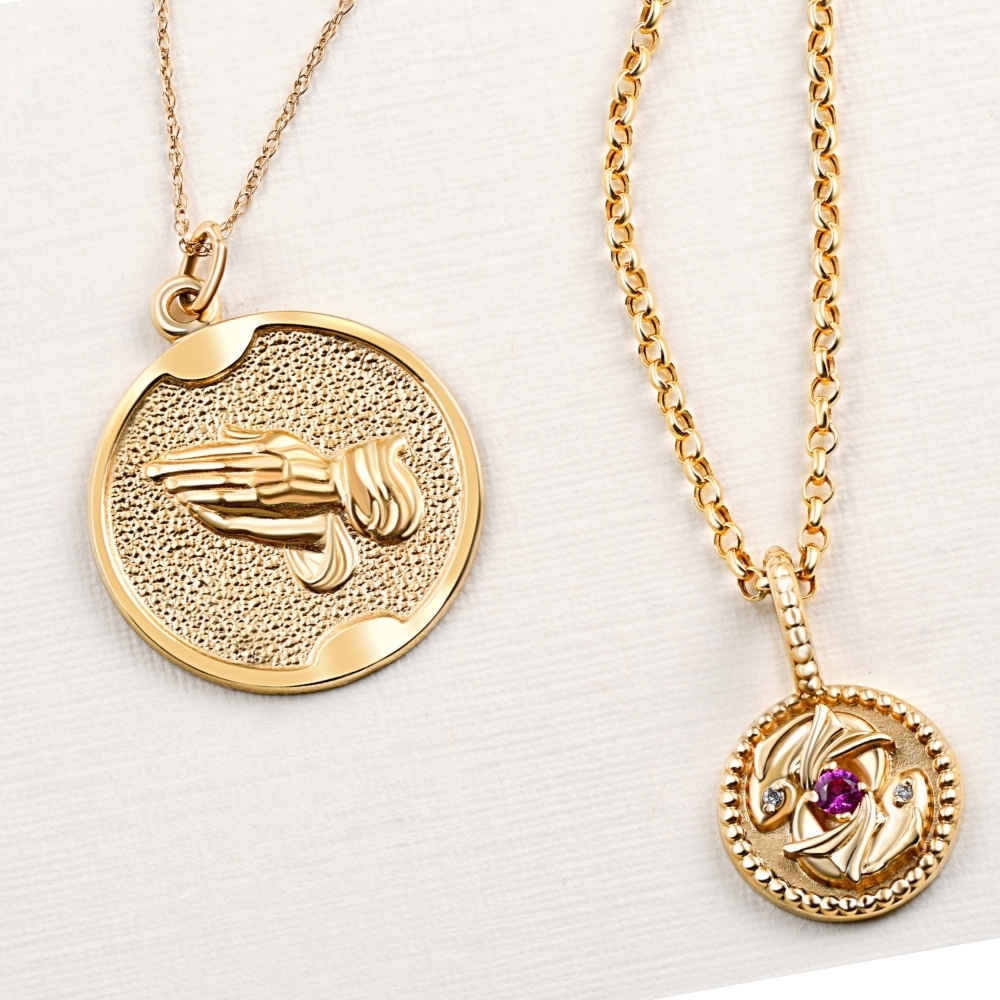Engagement Rings Through the Ages
Feb 2, 2018
History & Style - Unique Vintage Engagement Rings
For centuries, the engagement ring has served as a timeless symbol of enduring love and devotion. Though this tradition has evolved significantly over time, our current enthusiasm for unique vintage style engagement rings springs from ages of shifting aesthetics, cultural norms, conceptions of beauty, and techniques of craftsmanship. Today, the history of antique and vintage style engagement rings presents a captivating area of study for gemology experts, fine jewelry collectors, and (of course) individuals on the cusp of becoming engaged. Read on to learn about the fascinating history of engagement rings through the ages.
Origins of the Engagement Ring
The very first engagement ring for which a written record exists dates back to 1477 when Archduke Maximilian of Austria commissioned a piece for his future wife, Mary of Burgundy. As one might expect from a high-profile royal marriage, this move sparked a powerful trend among the other nobles, which in turn inspired generations of individuals to commission rings and offer them to their betrothed. Presenting a ring to one’s beloved upon the acceptance of a marriage proposal eventually spread (as trends often do) from the upper class to all segments of society.
While Mary of Burgundy’s famous ring might represent the first documented instance of unique vintage style engagement rings, many anthropologists place the origins of antique and vintage style engagement rings considerably earlier. In ancient Rome, women were reported to have been given two separate rings: an iron ring for wearing around the home, and a more luxurious gold ring to wear in public. In another ancient Roman tradition, certain rings were attached to small keys, indicating that the wearer belonged to her husband.
Centuries of Evolving Engagement Ring Traditions
From the Renaissance onward, the engagement ring has undergone a number of significant cultural shifts. During the 16th century, some regions saw the decline of engagement rings in favor of simple wedding bands. Nonetheless, the resurgence of the engagement ring trend seems to have been inevitable. Lavish gifts of engagement rings to celebrate proposals continued to enjoy popularity among nobles and royalty in many parts of Europe, and by the end of the 18th century, the tradition had extended from the aristocracy to the lower classes as well.
Anyone with an interest in unique vintage style engagement rings has probably noticed that, especially when it comes to older rings, the diamond is not always featured as the primary stone. During the Victorian Era, clusters of vibrant, colored gemstones were a favored choice in engagement ring designs, and precious jewels such as rubies, sapphires, and emeralds featured prominently. Diamonds became much more popular towards the end of the 19th century when extensive diamond supplies were discovered in southern Africa and leveraged for international trading.
As one of the most iconic eras for antique and vintage style engagement rings, the Victorian Era gave rise to the romantic, vividly styled rings that come to mind today when we think of antique and vintage jewelry.
One of the most prevalent styles was the “posey ring,” which often featured detailed floral etching and romantic inscriptions on the interior of the band. The use of precious metals and a variety of gemstones led to the creation of a diverse array of unique vintage style engagement rings during this era.
At the end of the 19th century, the Edwardian Era saw the rise of new technologies in engagement ring design. One of these major advancements was the development of platinum, which allowed for a greater degree of precision, control, and exquisite detailing. Antique and vintage style engagement rings from this era tend to be extraordinarily intricate, often using multiple diamonds in a single design, as well as elegant flourishes like custom etching and delicate milgrain.
Engagement Rings in the 20th Century
The Edwardian Era slipped almost seamlessly into the Art Nouveau period, perhaps best known for its flowing, naturally-inspired designs. Engagement rings from this era are often asymmetrical, and frequently evoke floral or leaf patterns with soft, flowing curves and edges. Antique and vintage style engagement rings from this time period are nothing if not statement-making, and the designs are often one of a kind.
As was true during the Victorian and Edwardian Eras, the inclusion of diamonds was continually becoming more popular, but precious stones like sapphires, emeralds, and rubies also dominated some of the most exquisite pieces. The willowy, eye-catching aesthetics of the Art Nouveau Era also lent themselves well to distinctive, colorful stones like tourmaline, amethyst, and citrine.
To this day, unique vintage style engagement rings from the Art Nouveau period (or designed with Art Nouveau aesthetics in mind) continue to be a favorite among lovers of fine jewelry. Modern engagement rings that feature stylized accents and lush, elegant curves that evoke the natural world owe much to this highly influential time period in jewelry design.
In a clear reflection of the changing times, Art Nouveau gave way to the glamor and innovation of the Art Deco Era. This period was defined by a forward-looking excitement and celebration of the future, exemplified by the “Roaring Twenties” and the glittering aesthetics made popular by novels like The Great Gatsby. In terms of the prevailing cultural ethos and stylistic trends, it’s hard to imagine a more perfect time for the evolution of the engagement ring.
Art Deco jewelry can be seen to reflect the boldness, brilliance, and grandeur of the time, and it should hardly come as a surprise that a favorite style of antique and vintage style engagement rings arose during this era. In stark contrast to the delicate, unique vintage style engagement rings crafted during the Art Nouveau period, Art Deco rings utilized strong lines and geometric patterns to create striking visual impressions. The reemergence of platinum as the primary metal of choice helped underscore the clean, striking aesthetics of Art Deco Era designs.
The Mid-Century Rise of the Diamond Engagement Ring
In the years during and immediately following World War II, diamond engagement rings had experienced a slackening in popularity – a natural reflection of the economic circumstances in which many Americans found themselves. However, the launch of a campaign by De Beers – featuring the iconic slogan “A Diamond is Forever” – caused the diamond industry to skyrocket. The final years of the 1940s not only witnessed a surge in the production of new fine diamond jewelry, but also a profoundly renewed interest in unique vintage style engagement rings.
According to Uri Friedman, author of an article in The Atlantic titled “How an Ad Campaign Invented the Diamond Engagement Ring,” advertising at the mid-century mark was extraordinarily influential in not only reviving but dramatically expanding the popularity of diamond engagement rings. He refers to his own experience of giving an heirloom engagement ring to his fiancée as “a beautiful moment – a gesture of love and commitment spanning generations,” and goes on to point out Edward Jay Epstein’s assertion that the movement signified the “diamond invention… [the] creation of the idea that diamonds are rare and valuable, and are essential signs of esteem.”
In the 50 years between 1940 and 1990, the percentage of first-time brides to receive diamond engagement rings rose from just 10% in 1940 to a phenomenal 80% in 1990. Numbers rose in countries abroad as well, and antique and vintage style engagement rings found a new life as an international symbol of love, luxury, and esteem.
Contemporary Twists on Classic Engagement Rings
While unique vintage style engagement rings are still very much in vogue, recent years have seen the ascendance of contemporary twists on classic styles. Elegant, custom engraved rings conjure the romantic aesthetics of the Victorian Era, while delicate filigree and exquisitely detailed milgrain bands evoke the timeless allure of Edwardian styles. For those who want more unique pieces, multi-stone antique and vintage style engagement rings with floral accents capture the splendor of the Art Nouveau period. And for those who love the bold, daring precision of the Art Deco period, square-cut diamonds and dramatic bezel settings have brought the glamorous aesthetics of the era into the 21st century.
Undoubtedly, the influence of centuries can be seen in the diverse aesthetics of contemporary engagement rings. From ornate configurations to the most minimalist styles, many engagement rings reflect classic inspiration enhanced by more current craftsmanship techniques. A compelling example of this is the growing popularity of lab-created diamonds, which represent a technologically advanced approach to timeless designs.
As time goes on, more and more individuals who are shopping for unique vintage style engagement rings are becoming well-versed in the basics of jewelry education. When it comes to diamonds, this includes an understanding of the four C’s – cut, color, clarity, and carat weight – as well as an appreciation of knowledgeable retailers and certificates of authenticity. Increased education has led to increased (and more refined) demand, both in terms of quality and with regard to ethical sourcing.
Engagement Rings Today
As innovations in jewelry craftsmanship have continued to evolve and exceed expectation, there are more options than ever before for choosing antique and vintage style engagement rings. According to the American Gem Society, a non-profit organization specializing in fine jewelry education, “Over the years, the most popular cut for diamond engagement rings has always been the round brilliant, consisting of 58 facets that divide the stone into a top and bottom half.” But other cuts have also come to enjoy considerable popularity, such as the princess cut, cushion cut, and marquise cut.
Another aspect of modern and unique vintage style engagement rings that has garnered considerable attention is the choice of band and setting. While white gold has arguably risen to prominence as the most popular engagement ring metal, some of the most outstanding vintage-inspired and contemporary designs utilize high-quality platinum, classic yellow gold, or increasingly fashionable variations of rose gold. Pave set diamonds are a favored choice both as an accent to engagement rings and for complementary wedding bands.
One of the most noteworthy current trends in engagement rings is the use of colorful diamonds. While traditional white diamonds have represented the prevailing color of choice in antique and vintage style engagement rings up to the present day, vivid alternatives have been making some memorable appearances in contemporary fine jewelry design. Shades of blue, pink, champagne, and even black can serve as a stunning expression of design for those seeking something truly unique. Black diamonds were first made popular by Queen Victoria near the end of the 19th century, and are currently enjoying a remarkable reemergence not only on account of their unique visual appeal but also their unique history and exceptional quality.
More than in any preceding era, individuals are able to tailor the aesthetics of an engagement ring not only to the time period but also to their unique personalities. A profusion of diverse variations in diamonds, alternate stones, creative settings, and innovative band variations has made the options virtually limitless. As a result of this historic evolution, custom ring design has also enjoyed a remarkable resurgence, harkening back to the original Renaissance tradition of commissioning an engagement ring for one’s beloved.
According to ancient Roman tradition, the placement of the engagement ring on the fourth finger of the left hand connects to the concept of the vena amoris, or “the vein of love,” a vein that was believed to reside in this finger and connect directly to the heart. While modern science may not prove the presence of such a vein, the most beautiful, exquisitely crafted, and unique vintage style engagement rings have a profound way of connecting to the heart.
 -
-  -
- 
 Engagement Rings
Engagement Rings
 Tungsten
Tungsten Wedding Rings
Wedding Rings
 Fine Jewelry
Fine Jewelry
 Diamond Studs
Diamond Studs
 Up To 80% Off
Up To 80% Off
 Find The Perfect Gift
Find The Perfect Gift
 White Gold
White Gold
